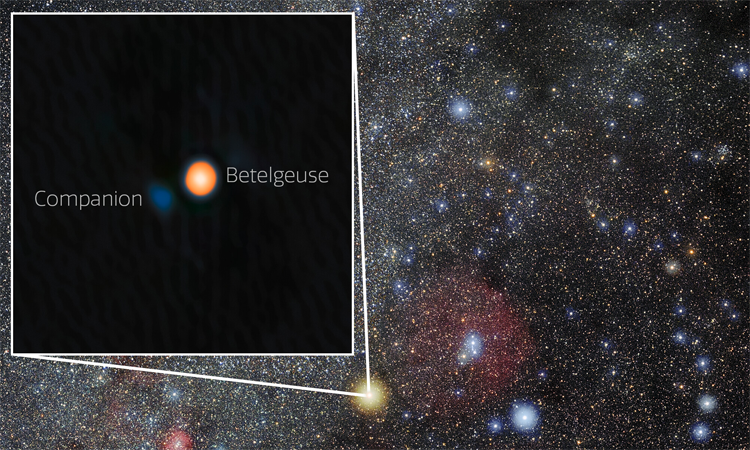News Flash
News Flash

PARIS, July 21, 2025 (BSS/AFP) - Since at least the time of the ancient Egyptians, people across the world have gazed up in awe at Betelgeuse, one of the brightest stars blazing in the night sky.
Now astronomers have discovered that this red supergiant, known to many as the hunter's shoulder in the Orion constellation, is being orbited by a much smaller companion star, a study said on Monday.
It is not the first time Betelgeuse has surprised stargazers.
Seemingly out of nowhere, the giant star dramatically dimmed for five months between 2019 and 2020, leading some scientists to suggest it could soon die in an epic supernova explosion.
Further observations revealed that this event -- known as the "Great Dimming" -- was actually caused by material ejected from the surface that cooled part of the star, creating a dust cloud that blocked its light.
But scientists could still not explain why Betelgeuse's brightness changes regularly, both on a 400-day cycle and another that lasts nearly six years.
n a paper titled "A Buddy for Betelgeuse" published in December, some researchers theorised that the longer variation could be caused by a hidden small star orbiting the behemoth.
Astronomers using the Gemini North telescope in Hawaii have now discovered this elusive companion, according to a new study in The Astrophysical Journal Letters.
- Little buddy -
This companion has a mass around 1.5 times greater than our Sun, the research estimated.
That means it is dwarfed by Betelgeuse, which is 1,000 times bigger than the Sun.
The companion star is around four times the distance from Betelgeuse as the Earth is from the Sun, which is quite close for a stellar companion.
The discovery is the first time such a close companion star has been detected orbiting a supergiant, according to a statement from the US research centre NOIRLab, which operates the Gemini Observatory.
Betelgeuse is more than 10,000 times brighter than the Sun, its blinding light making spotting anything nearby difficult.
Steve Howell, a NASA scientist who led the research team, said previous "papers that predicted Betelgeuse's companion believed that no one would likely ever be able to image it".
However the Gemini North telescope was able to spot the much smaller, dimmer star using a technique called speckle imaging.
This involves assembling many images taken with short exposure times to overcome the distortions that Earth's atmosphere causes ground-bound telescopes.
According to Greek myth, the giant hunter Orion claimed he would kill all the world's beasts, so Earth goddess Gaia sent a scorpion to kill him. God king Zeus then turned both Orion and the scorpion -- Scorpius -- into constellations.
Earlier, ancient Egyptians included Betelgeuse in the constellation Osiris, their god of the dead.
Even earlier, research has suggested that Indigenous Australians included Betelgeuse in their own constellations -- and had noticed the star's varying brightness.